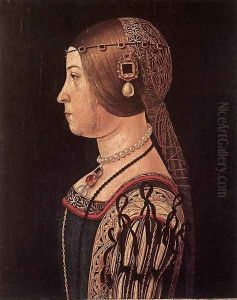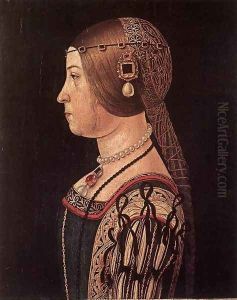Alessandro Araldi Paintings
Alessandro Araldi was an Italian painter active during the Renaissance, born in Parma around 1460 and dying in the same city in 1529. His life and work are emblematic of the artistic developments occurring in Northern Italy during this period, reflecting the transition from the late Gothic style to the emerging Renaissance ideals. Araldi is perhaps less known than his contemporaries like Leonardo da Vinci or Raphael, yet his contributions to art, particularly in fresco and panel painting, showcase a remarkable blend of innovation and adherence to traditional techniques.
Araldi’s early life is somewhat obscure, but it is believed he was trained in the workshop of a local Parma painter. His style suggests he was influenced by the Lombard school, as well as by the work of other artists active in neighboring regions such as Emilia and Bologna. Araldi's paintings are characterized by their delicate color palette, attention to detail, and the incorporation of architectural elements that frame his figures, a technique that adds depth and perspective to his compositions.
Throughout his career, Araldi worked on various significant commissions, primarily religious works for churches and private devotional pieces. One of his most famous works is the series of frescoes in the Parma Cathedral and the decoration of the Rocca Sanvitale, a castle in Fontanellato, near Parma. These works exhibit Araldi's skill in fresco technique and his ability to weave complex narratives through visual arts. His panel paintings, often of Madonnas, saints, and other religious figures, are noted for their serene beauty and the gentle, emotive expressions of his subjects.
Despite his considerable output and influence in the Parma region, Araldi's work was somewhat overshadowed by the achievements of the High Renaissance masters. Nevertheless, in recent years, there has been a renewed interest in Araldi's contributions to Italian Renaissance art, with scholars highlighting his role in the development of the Parma school of painting and his influence on subsequent generations of artists in the region.
Alessandro Araldi died in 1529, leaving behind a legacy that, while not as widely recognized as that of some of his contemporaries, is integral to understanding the evolution of Renaissance art in Northern Italy. His works continue to be studied and appreciated for their beauty, technical skill, and historical significance.

